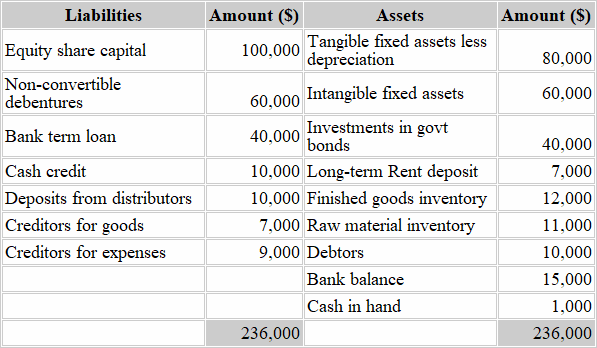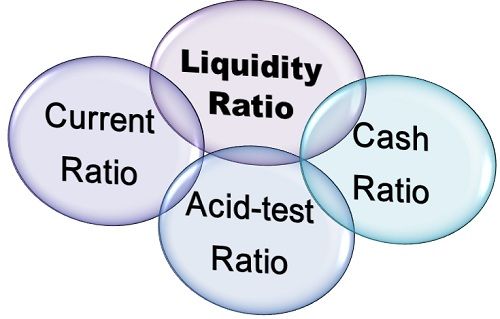
Both give a view of a company’s ability to meet its current obligations should they become due, though they do so with different time frames in mind. As you can see, Charlie only has enough current assets to pay off 25 percent of his current liabilities. Banks would prefer a current ratio of at least 1 or 2, so that all the current liabilities would be covered by the current assets. Since Charlie’s ratio is so low, it is unlikely that he will get approved for his loan.

Competition – How Does the Industry in Which a Company Operates Affect Its Current Ratio?
Less than 1 means the company has some problems with liquidity, and it may not be able to pay its bills. More than 1 means it’s got more assets than it needs, which is fantastic news — to a point. There are a lot of different ways to evaluate a company’s liquidity, but the current ratio is one that can help you judge just how serious liquidity issues are. It’s the most conservative accounting software: email settings in xero measure of liquidity and, therefore, the most reliable, industry-neutral method of calculating it. The quick ratio (also sometimes called the acid-test ratio) is a more conservative version of the current ratio. Note the growing A/R balance and inventory balance require further diligence, as the A/R growth could be from the inability to collect cash payments from credit sales.
Example 1: Company A
This means that Company A has $2 in current assets for every $1 in current liabilities, indicating that it can pay its short-term debts and obligations. The sudden rise in current assets over the past two years indicates that Lowry has undergone a rapid expansion of its operations. Of particular concern is the increase in accounts payable in Year 3, which indicates a rapidly deteriorating ability to pay suppliers.
Inventory consideration:
For example, if the company changes its inventory valuation method, it can affect the value of current assets and lower the current ratio. The current ratio can also provide insight into a company’s growth opportunities. A high current ratio may indicate that a company has excess cash that can be used to invest in future growth opportunities.
One limitation of using the current ratio emerges when using the ratio to compare different companies with one another. Businesses differ substantially between industries, and so comparing the current ratios of companies across different industries may not lead to productive insight. In some cases, companies may attempt to improve their Current Ratio by delaying payments or accelerating the collection of accounts receivable.
- Simply take the current assets and divide them by the current liabilities.
- The cash ratio is ideal for assessing immediate liquidity without assuming future collections, but it may be too conservative for businesses that collect payments reliably, like SaaS or professional services.
- This is why it is helpful to compare a company’s current ratio to those of similarly-sized businesses within the same industry.
- However, if you learned this skill through other means, such as coursework or on your own, your cover letter is a great place to go into more detail.
- Working Capital is the difference between current assets and current liabilities.
Risk Assessment – Why Is the Current Ratio Important to Investors and Stakeholders?
Because buildings aren’t considered current assets, and the project ate through cash reserves, the current ratio could fall below 1.00 until more cash is earned. Finally, the operating cash flow ratio compares a company’s active cash flow from operating activities (CFO) to its current liabilities. This allows a company to better gauge funding capabilities by omitting implications created by accounting entries. For example, a normal cycle for the company’s collections and payment processes may lead to a high current ratio as payments are received, but a low current ratio as those collections ebb. Calculating the current ratio at just one point in time could indicate that the company can’t cover all of its current debts, but it doesn’t necessarily mean that it won’t be able to when the payments are due.
Current assets refer to cash and other resources that can be converted into cash in the short-term (within 1 year or the company’s normal operating cycle, whichever is longer). By comparing the current ratio of your company to its industry or to its main competitors, you pick up a little bit more of the story of the company and how it manages debt and income. Of course, a one-time current ratio figure isn’t enough to know much; you really need to look at them across multiple years. Seasonal businesses can experience substantial fluctuations in their current ratio. This figure can be interpreted through the lens of where a company is in its operating cycle.
However, the quick ratio excludes prepaid expenses and inventory from the assets category because these can’t be liquified as easily as cash or stocks. The current ratio provides a general indication of a company’s ability to meet its short-term obligations. A current ratio of 1 or greater is generally considered good, indicating that a company has enough assets to cover its current liabilities.
For example, supplier agreements can make a difference to the number of liabilities and assets. A large retailer like Walmart may negotiate favorable terms with suppliers that allow it to keep inventory for longer periods and have generous payment terms or liabilities. Current ratios can vary depending on industry, size of company, and economic conditions.